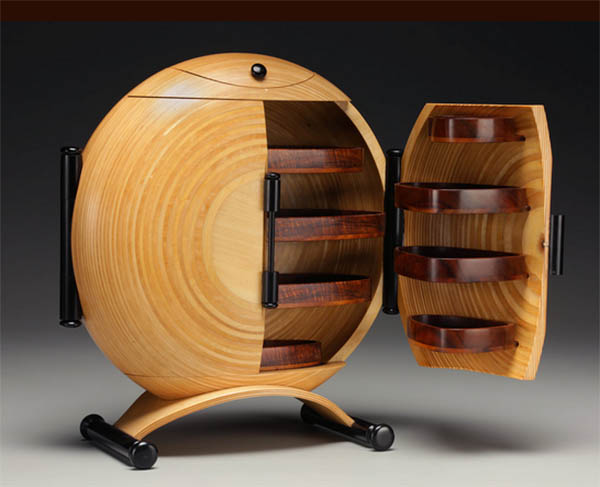
Ray Jones makes boxes. It’s a woodworking specialty that he attributes to his engineering background, “because they kind of combine the engineering and woodworking, with the mechanics of the boxes.”
He has also engineered his boxes to have no metal parts: “I’ve always thought it was a contradiction to use metal hinges in a wooden box, so all my boxes have wooden hinges,” he explains. For the majority of his boxes, which are production pieces, he has created hinges that are essentially a dowel pin a socket, making only the end of the dowel visible. Generally, Ray uses birch dowels, which means that there may be some contrast between the visible part of the hinge and the wood if it’s a darker variety, but not as much in lighter woods. He has, however, occasionally turned dowels from ebony or other darker woods to create a greater contrast. In his one-of-a-kind pieces, the hinges are more exposed and made of contrasting woods so that the hinge becomes an ornamental, as well as functional, part of the piece.
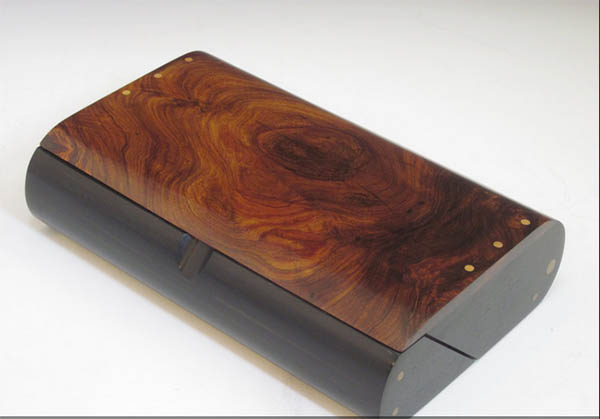
Ray got into woodworking after several college summers spent working construction for a California employer who was building an industrial park and a family home. “The man was building for himself, so it was more important for it to be done right than to be done quickly. He really was a good teacher, and I learned a lot about working with my hands from him,” Ray said. “It gave me enough confidence to try other things.”
Those other things included building furniture for the house he rented while working in Los Angeles as an aeronautical engineer, then smaller items for the woman who would become his wife (she already had a house full of furniture). One of the boxes Ray made for his future wife would later become the original model for his production line.
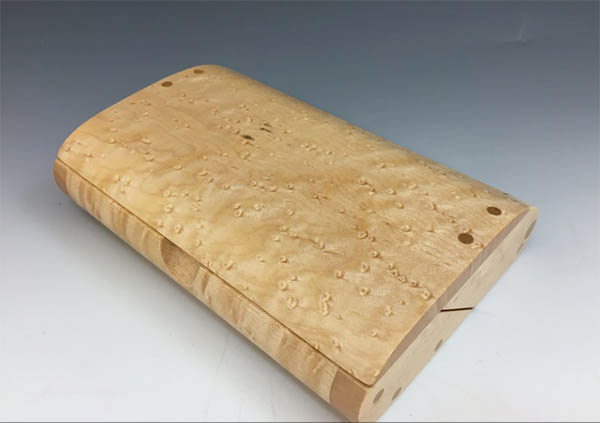
Eventually, Ray and his wife decided that they didn’t want to work for big companies or live in a big city, and moved to Asheville, North Carolina, in part because of its prominence in the handicrafts industry. Since moving there in 1990, Ray has served stints on the boards of Handmade in America and the Carolina Mountain Woodturners, as well as becoming a member of the Southern Highland Craft Guild.
Before he left California, though, Ray notes that there’s “kind of a funny anecdote” about koa, one of his favorite woods. (“I just love the color and the warmth, the depth of the figure that you often see in koa.”) In the late 1980s, he said, koa was very inexpensive, “so I would buy koa that came from Hawaii, and I would make boxes.” At the time, he was also selling items to stores located in Hawaii. “So I’d ship the boxes to Hawaii, and tourists from California would go over and buy the boxes and bring them back.”
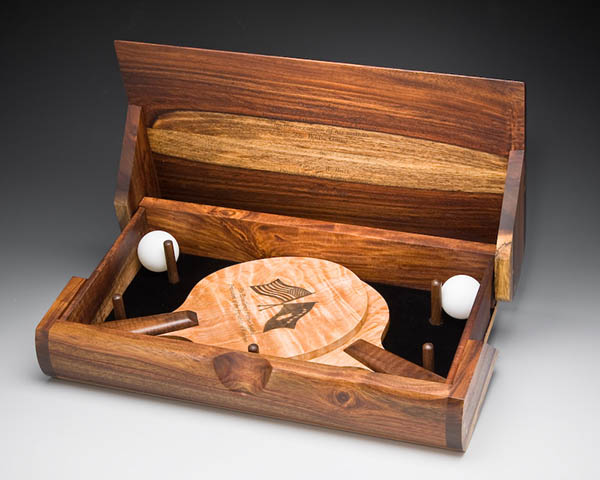
His “new” home and memberships have also presented new opportunities to showcase his woodworking. For instance, at the time of the 2008 Summer Olympics hosted in Beijing, China, Ray was on the board of Handmade in America and, as a result, received a commission to build presentation boxes for ping pong sets that would be presented as gifts from then-President George W. Bush to the president and vice president of China.
“It may sound like a really cool thing, but the way it worked out is, there’s some office of protocol, I guess, in the White House that handles these kind of diplomatic gifts, and they deal with this company in North Carolina that basically can personalize anything, and so they asked, ‘Can you do ping pong paddle sets in cases, but then when it came to do it, all the ones they could find and personalize were made in China,’” Ray explained. Through the Handmade in America connection, the personalization company ended up commissioning him to engraved boxes as well the ping pong paddles – “which I was kind of daunted by at first, but then they said that they probably wouldn’t ever use them, they would just be presentation pieces.” Ray built the lid, sent it off so that the top and underside could be engraved, then finished the box after the company sent the engraved lid back to him.
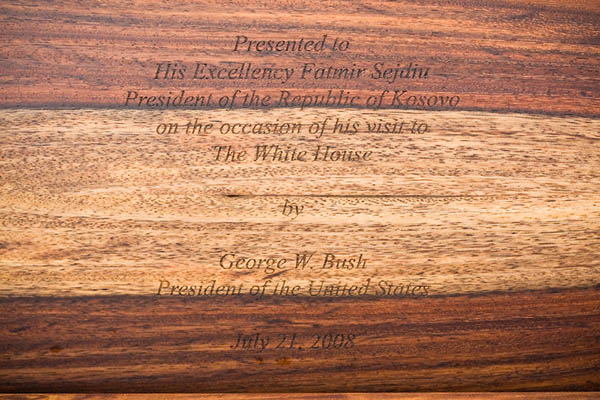
“I figured my work was going to be representing our country, so I was happy to do it.” And, it turned out, it also led to another opportunity to create a diplomatic gift ping pong box, for the president of Kosovo, which had just been recognized by the U.S. “The president was coming to visit President Bush, and ping pong was their only internationally competitive sport, so they wanted another set for that, too.”
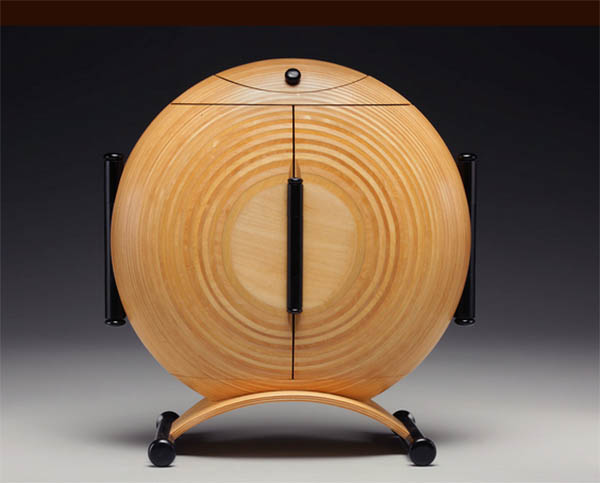
It was Ray’s membership in the Southern Highland Craft Guild that proved the impetus for one of his favorite design series, the Omega boxes. Back in about 1999, the Guild hosted a members exhibit with the theme of “Closures.” A good friend of Ray’s, a knife maker who used to receive Ray’s scrap wood for use in making knife handles, had recently passed away, and Ray’s piece, a circular box with black hinges and latch, was made in honor of this friend. The piece opens to display a pair of his knives crossed inside, “like crossed swords.”
Additional boxes in the Omega series incorporate cylinders, spheroids and arches. “Basically, I like playing with the intersection of different geometric shapes. I guess that’s my engineering training coming back,” Ray said.
At last tally, Ray estimates he’s made over 14,000 boxes. “Boxes are what I really like to do.”





